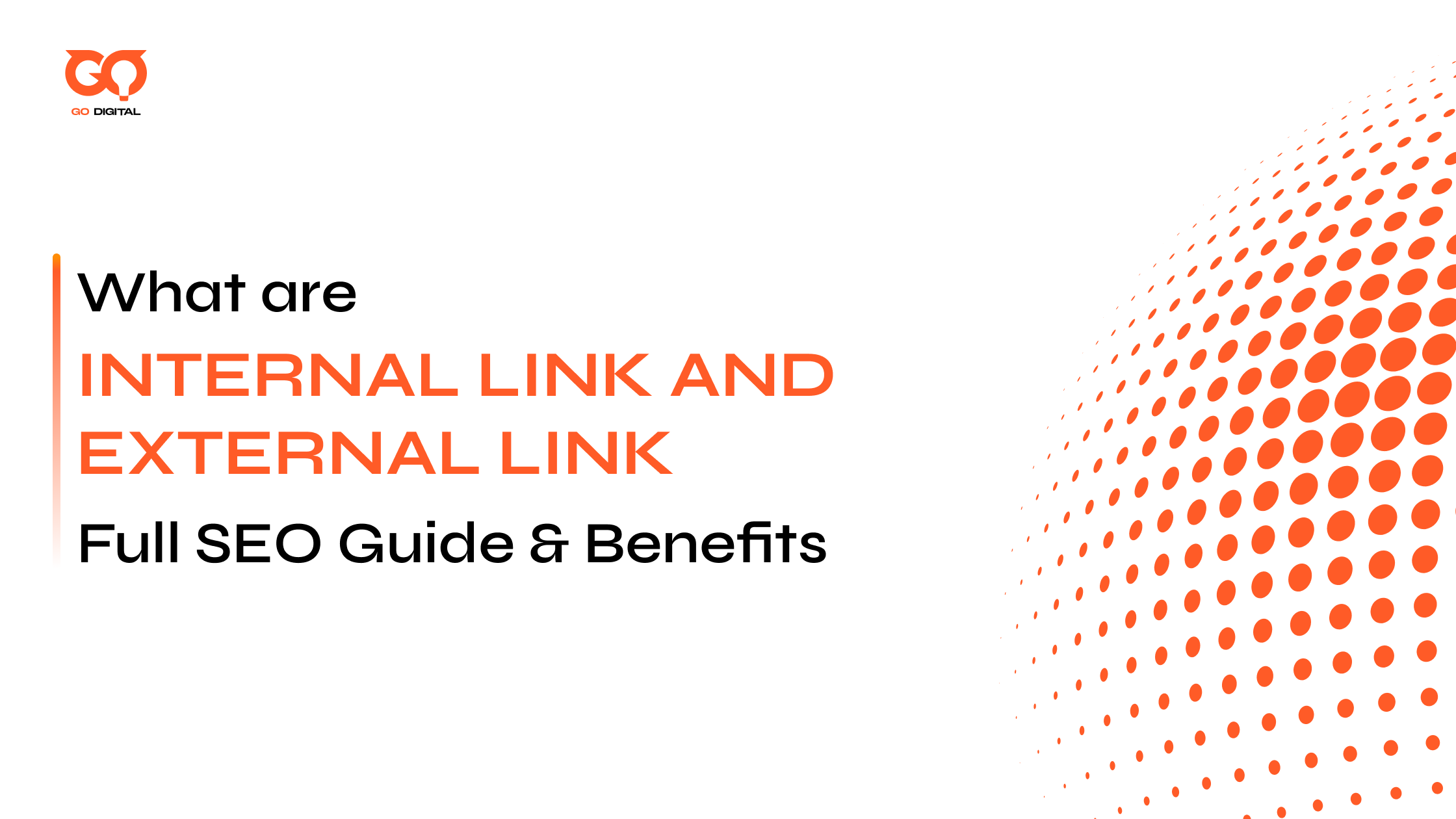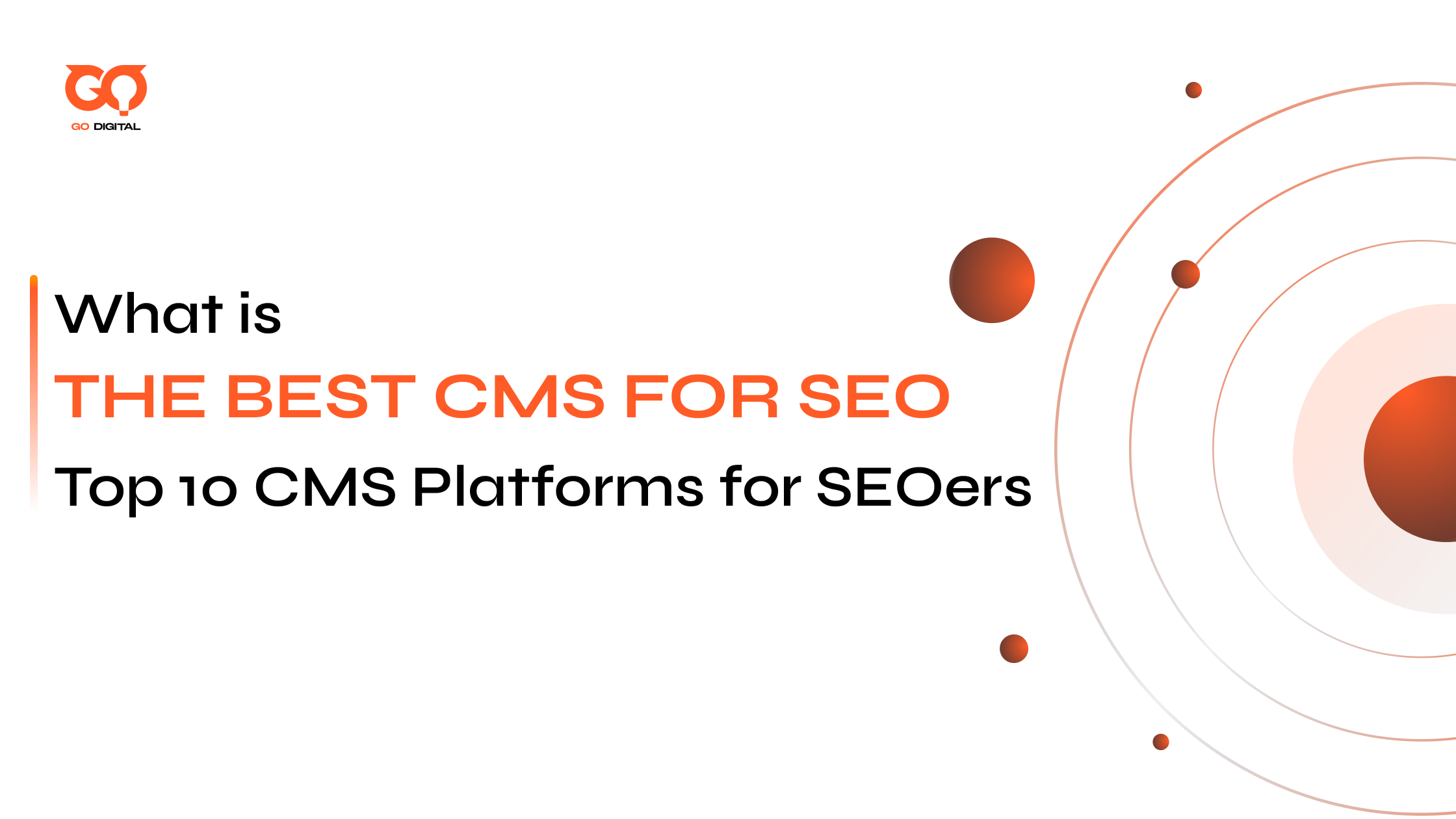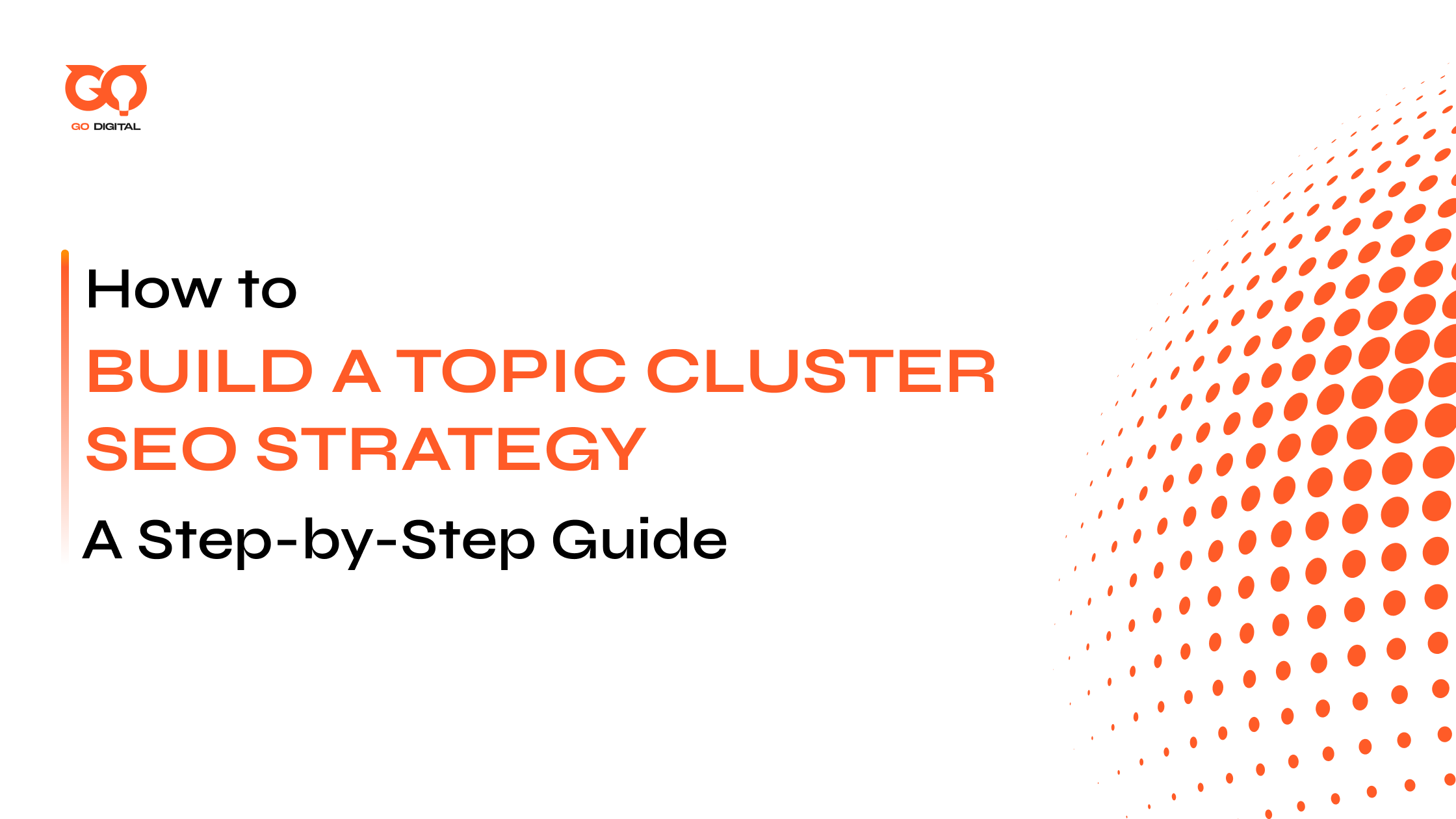Internal and external links can make or break your website’s search visibility — yet many site owners still misuse them or overlook them completely.
In this guide, you’ll learn exactly what internal and external links are, how they affect your SEO, and how to build a smart linking strategy that improves both rankings and user experience.
Key takeaways:
|
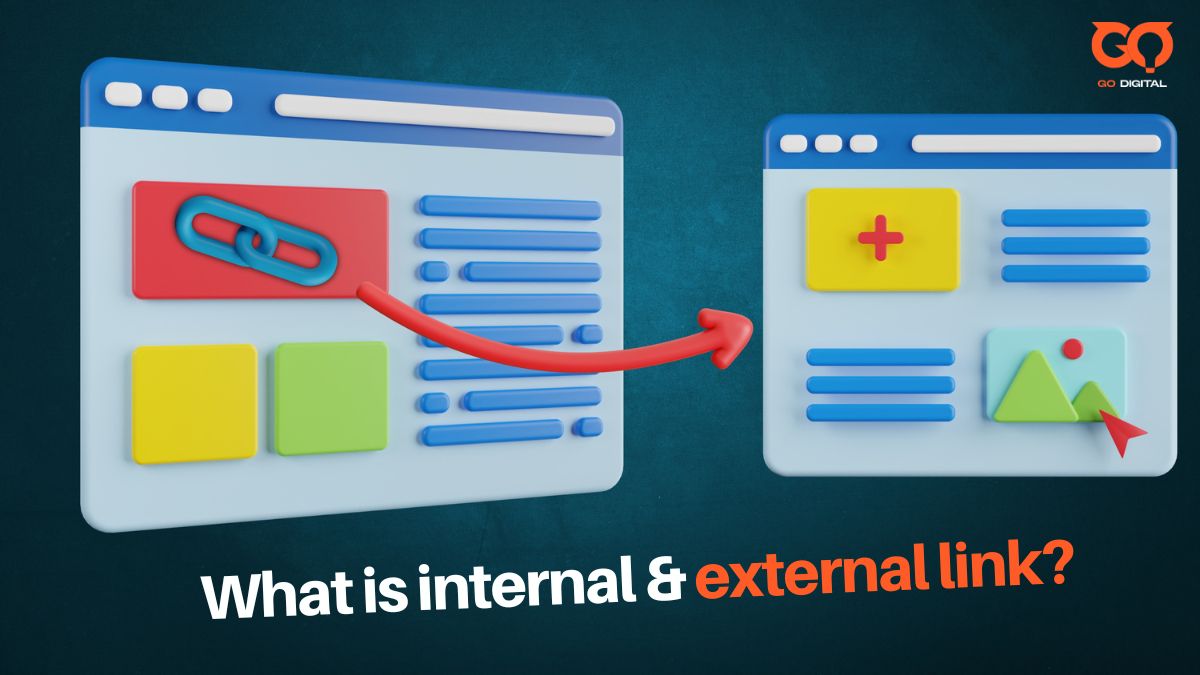
What Is Internal Link and External Link? Full SEO Guide & Benefits
8 SEO Benefits of Internal Links (With Real Examples)
Before we get into strategies and best practices, let’s break down what are internal link and external link and how they fit into your SEO link building strategies.
1. What is an Internal Link?
An internal link is basically your website talking to itself—but in a productive, healthy way. It’s a hyperlink that points from one page to another within the same domain. You know, the digital version of “Hey, if you liked this, you’ll love my cousin over here!”
Example: <a href=”http://www.same-domain.com/” title=”Keyword Text”>Keyword Text</a>
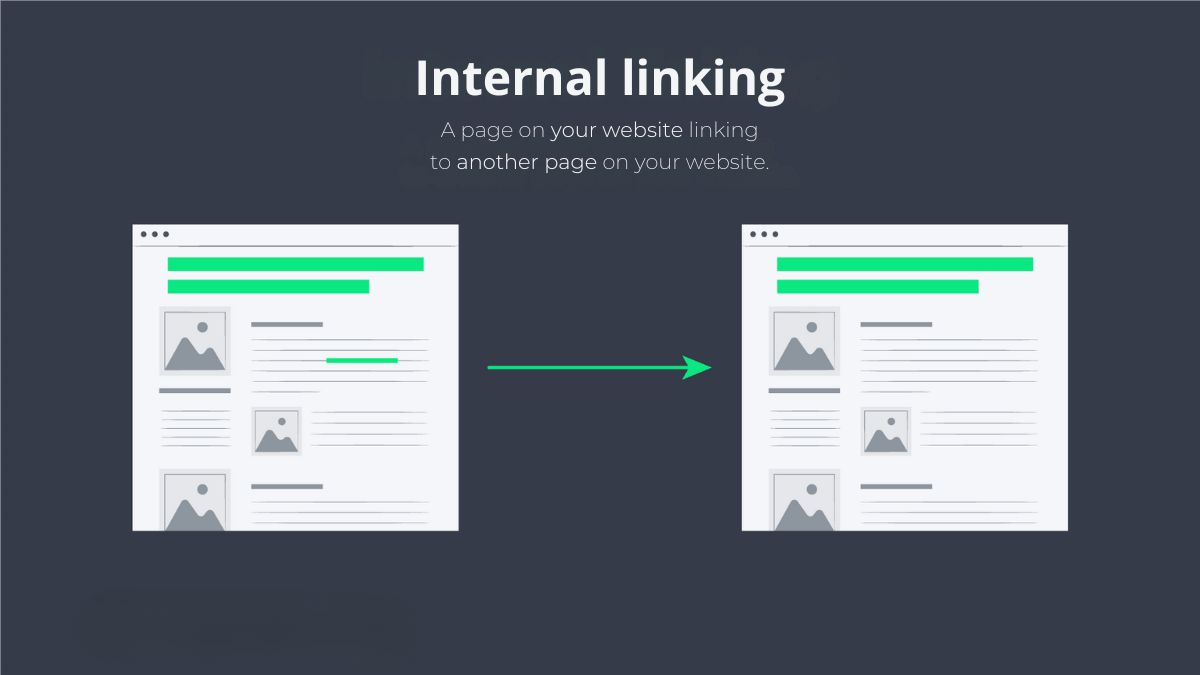
A blog post linking to another related article on the same website is using an internal link
Types of Internal Links (aka “the squad”):
-
Navigation links – The menu items that say “Click me or be lost forever.”
-
Footer links – For the overachievers who scroll all the way down.
-
Contextual links – Hidden gems inside your actual content, linking to stuff people might actually want.
Why Do Internal Links Matter?
-
Google’s personal GPS: Helps the almighty bot army figure out where things are and how they’re connected.
-
Content Hierarchy: It’s like telling Google, “This page is Beyoncé, and this one is Michelle.”
-
Link Equity Redistribution: Got a strong page? Use it to prop up your awkward, overlooked blog posts. It’s charity with SEO benefits.
2. What is an External Link?
Let’s talk about external links—those hyperlinks that take your readers away from your website, like sending them on a quick field trip… hopefully not to a sketchy alley on the internet.
These are the links pointing to a whole different domain. Not your turf. Someone else’s house. Ideally, a really nice, reliable house with a clean URL and good snacks.
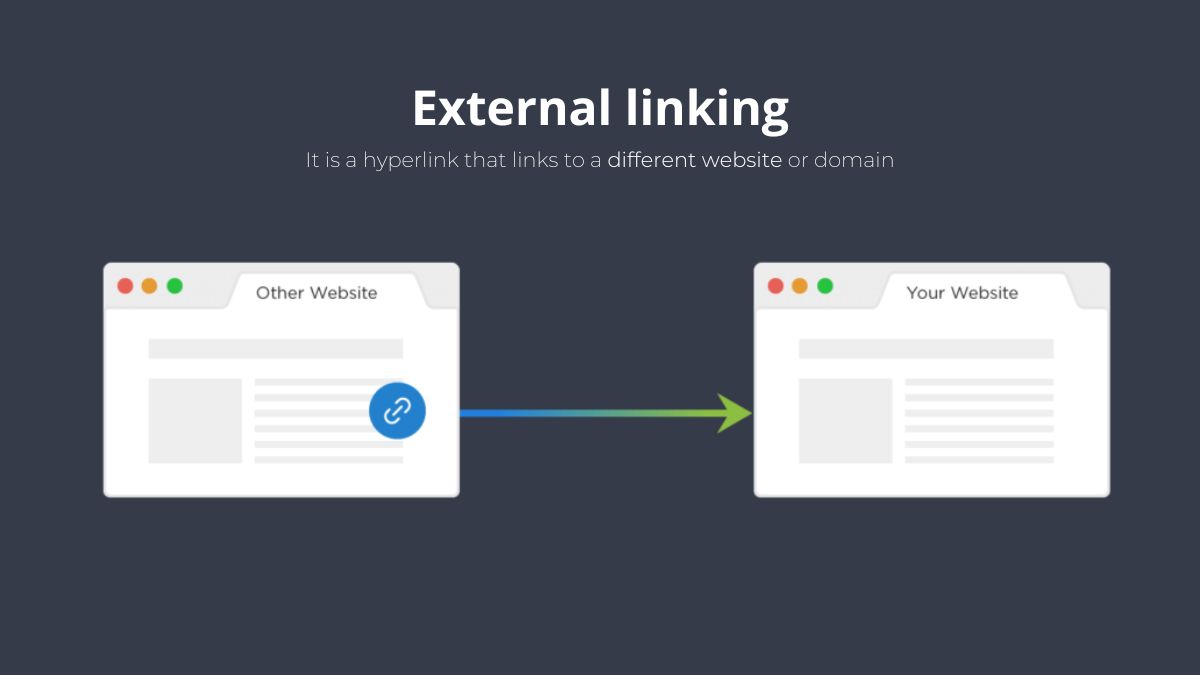
External links are mostly used for providing references, citations, or supplementary material
For example: <a href=”http://www.external-domain.com/”>Anchor Text Example</a> You use them when you say: “Hey, I’m not just making stuff up—look, this smart person agrees with me.”
Common Types of External Links
Now, not all external links are the same. Depending on how they’re used—and how you label them—they can send very different signals to search engines. Here are a few types you’ll probably come across:
- GC (User-Generated Content) Links: These are links that come from people who leave comments like “Nice article! Check out my NFT project [link].” That’s why you slap a
rel="ugc"on it, so Google knows you didn’t personally vouch for this random internet goblin. - Sponsored Links: You got paid to place that link? Cool. Just tell Google with
rel="sponsored". Transparency is hot. It’s also required. - DoFollow Links: These are the default. They say, “Yes, I recommend this link, pass along some SEO juice.” Great for the one being linked, and risky if you’re linking to dodgy websites. Choose your friends wisely.
- NoFollow Links: Like saying: “Here’s a link but don’t trust it too much.” Useful for sketchy sources, affiliate stuff, or just when you’re emotionally unavailable.
Why it’s important:
- Increases credibility: When you link it to relevant and authoritative sources, you build more trust now and improve its value.
- Signals content relevance to search engines: Google and other search engines use external links because they signal content relevance to help them understand your content’s context and trustworthiness.
- Supports a stronger backlink profile (when others link to your site in return): To link to other people encourages reciprocal linking. This strengthens your backlink profile with improved SEO, supporting a stronger backlink profile when others link to your site in return.
8 Benefits of Internal Links for SEO
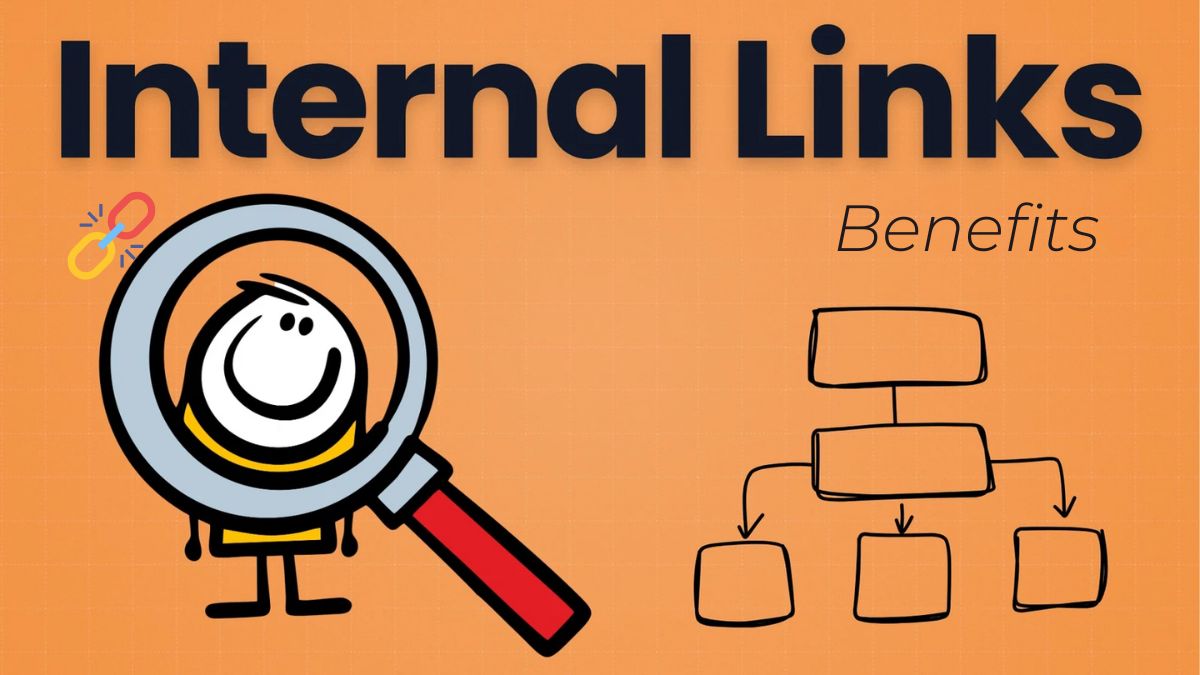
SEO benefits of internal links: improved rankings, longer user sessions, link equity distribution, and better site structure
A well-structured internal linking strategy is key toward this impact. These eight important advantages get consideration to stress value.
- Clarify Site Structure for Google: Internal links help search engines understand the relationship between pages. They show which content is connected and how your site is organized.
- Improve Crawling and Indexing: Linking to new or important content from existing pages makes it easier for search engines to discover and index your updates faster.
- Distribute Page Authority (Link Equity): When a high-authority page links to a lower-performing one, it passes some of its SEO value, helping boost rankings and visibility across your site.
- Enhance User Experience: Smart internal linking helps visitors find relevant content without having to dig. It encourages them to explore more of your site organically.
- Reduce Bounce Rate and Increase Time on Site: When people find more useful content through links, they stay longer and interact more. This is a positive engagement signal to search engines.
- Strengthen Website Architecture: A clear internal link structure supports a strong content hierarchy. It makes your site easier to navigate and more logical to both users and search engines.
- Support Keyword Targeting: When you use anchor text with keywords, it tells Google what the linked page is about giving it a better shot at ranking for those terms.
- Improve Long-Tail Keyword Rankings: Internal links can help surface niche pages that target very specific search queries, boosting your chances of showing up in more detailed searches.
| Read more: SEO Strategy for SAAS: How to Boost Organic Growth in 2024? |
The Importance of External Links for SEO
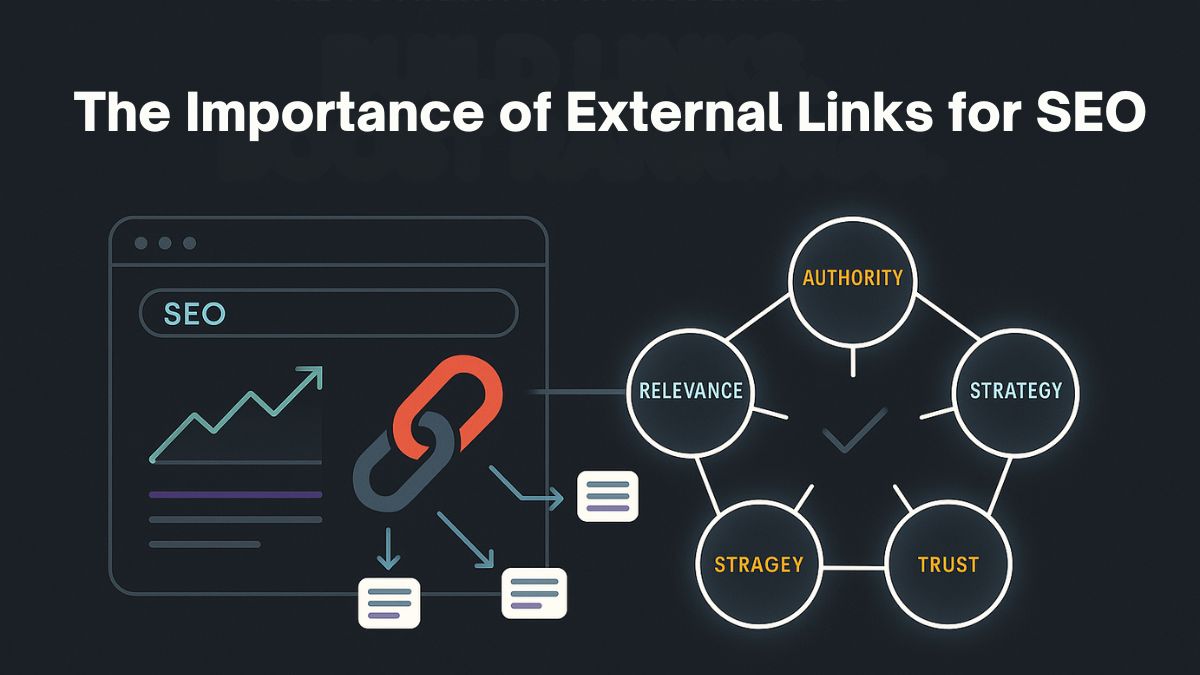
The Importance of External Links for SEO
While internal links hold significant weight, external links play a major role in search engine algorithms. Let’s explore why external links matter for effective SEO.
- Domain Authority Building: Search engines treat links from reputable domains as votes of confidence.
- Credibility and Trust: Citing authoritative sources enhances your content’s trustworthiness.
- Referral Traffic: Outbound links can generate traffic if others reciprocate by linking back.
- Content Validation: Linking to studies, data, and established experts supports the validity of your information.
You might be interested in: How to Build Backlinks Without Paying for Them? 9 Fast and Easy Methods
Tips on How To Use Internal and External Link Effectively

Using Internal and External Link Effectively
Whether you’re working on internal or external link building, the right strategies are key to SEO success.
1. Internal Linking Strategy
Content Hub Structure: Create pillar pages with topic clusters that link to and from each other. Learn how create your first content hub in our article: How to Create a Content Hub: Step-by-Step Guide
Contextual Relevance: Only link related pages with natural, descriptive anchor text. Like the internal link about “content hub” you see above.
Orphan Page Fixing: Ensure all pages are linked from somewhere within the site. If you have an old campaign landing page that still has SEO value, find relevant blog posts to link to it.
Navigation Optimization: Use sidebar, footer, and breadcrumb links to support core site structure. For example, a product page might use breadcrumbs like Home > Collection > Women’s Shoes to help users navigate where they are.
Update Old Content: Revisit high-performing older posts and add internal links to newer, relevant content. This helps maintain their authority and keeps them SEO-relevant.
Full Control: You choose the anchor text, target page, and context. That’s a big advantage of internal links over backlinks, which are often out of your hands.
Clarify Site Hierarchy: Helps search engines understand your website’s structure. Tip: A clear internal linking structure increases the chances of Google displaying sitelinks beneath your listing, which improves visibility and CTR.
Keyword Targeting: Select keywords carefully in anchor texts for better SEO relevance. Mixing exact-match keywords with semantic alternatives helps you avoid over-optimization and improves topical relevance.
2. External Linking Strategy
Link to Authoritative and Relevant Sources:When referencing facts, data, or industry insights, link to high-quality, trustworthy domains. It improves credibility and signals relevance to search engines.
Open External Links in a New Tab: To keep users on your site, consider setting external links to open in a new browser tab. This way, readers can explore the external source without leaving your page.
Be Mindful of Quantity and Placement:Don’t overload your content with outbound links. Use them only when they enhance the user’s understanding or provide genuine value.
Social Sharing & PR: Share your content strategically to attract backlinks. PR outreach, social media, and guest content can all help build your external link profile organically.
Detailed Comparison Between Internal and External Links
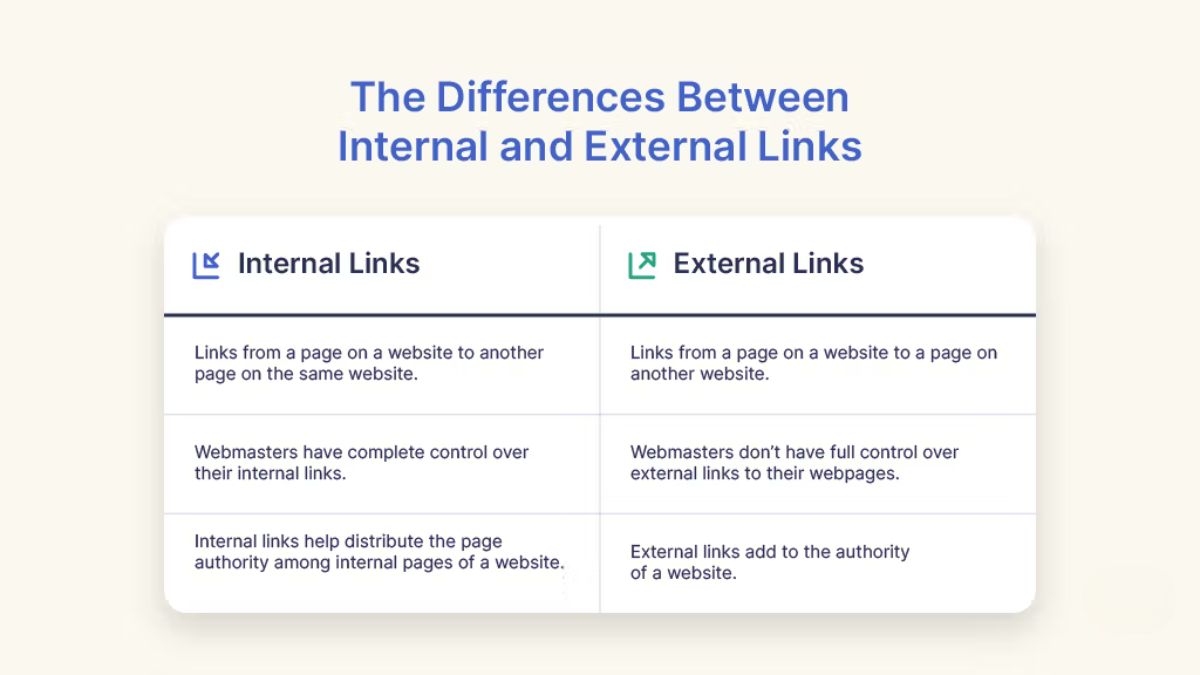
The difference between inbound and outbound links
To truly optimize your SEO strategy, it’s essential to understand the difference between inbound and outbound links—a crucial distinction that also ties closely to the roles of internal and external links in shaping site authority, navigation, and search visibility.
| Feature | Internal Links | External Links |
| Definition | Links directing users to different pages within the same website. | Links directing users to a different domain. |
| Purpose | Improve navigation, distribute authority, and enhance SEO. | Build authority, credibility, and enrich user experience. |
| Location | Within the same domain | Between different domains |
| Control | Fully controlled by site owner | Controlled by other websites |
| SEO Impact | Improves crawlability, user flow | Builds credibility and domain authority |
| Link Equity | Passed within the site | Can receive from or give to external domains |
| Risk Factor | Low (you manage them) | Medium (broken links, link farms) |
| Use Case | Content structure, navigation | Citing sources, building authority |
| Best Use | Highlighting related content | Linking to valuable, credible resources |
Common Linking Mistakes and How to Fix Them
Common linking mistakes like broken links and unoptimized anchor text, along with solutions
Even a well-structured SEO strategy can be compromised by common linking errors—ranging from excessive internal linking to low-quality outbound references. Identifying and resolving these issues is essential for maintaining site health, optimizing crawl efficiency, and preserving link equity.
1. Internal Linking Mistakes and How to Fix them.
| Linking mistakes | Details | How to fix |
| Overusing Internal Links | Too many links on one page dilute link value. | Limit to relevant, strategic links (3–5 per 1000 words is a good baseline) |
| Broken Links | These hurt SEO and user trust. | Use tools like Ahrefs or Screaming Frog to detect and fix regularly. |
| Orphan Pages | These are pages with no internal links pointing to them, making them hard for search engines to discover. | Identify orphan pages using a site crawler and add internal links from relevant content to integrate them into your website structure. |
2. External Linking Mistakes and How to Fix them.
| Linking mistakes | Details | How to fix |
| Linking to Low-Quality Sites | Outbound links to spammy domains can harm rankings. | Vet external sources before linking; use rel=”nofollow” where needed. |
| Ignoring Mobile Navigation | Poor internal linking on mobile can hinder UX. | Ensure internal links are thumb-friendly and visible across devices. |
Tools for Link Analysis and Optimization

SEO tools for analyzing and optimizing link structure
To refine your linking strategy and keep things running smoothly, try these tools:
| Category | Tool Name | Key Features |
| Internal Linking Tools | Google Search Console | Identify internal links and pages with low linking |
| Ahrefs | Audit internal link flow, identify orphan pages, analyze anchor text | |
| Screaming Frog | Crawl your site to find internal linking opportunities | |
| Broken Link Checkers | Broken Link Checker | A free tool to scan for broken URLs |
| SEMrush | Detects broken internal and external links in site audits | |
| WordPress Link Plugins | Yoast SEO | Provides internal linking suggestions and readability improvements |
| Internal Link Juicer | Automates contextual internal linking within WordPress posts |
→ You might be interested in: Why SEO Audit Is Important To Unlock 10X Website Performance
Final Thoughts
To build a successful SEO strategy, it’s critical to understand what is internal link and external link and how each contributes to your site’s performance. Remember: every link is a signal. Whether internal or external, make it count by pointing to content that truly adds value.
At Golden Owl Digital, we help businesses implement smart, scalable SEO strategies—including robust internal and external linking—so your content doesn’t just exist online but thrives. Remember: every link is a signal. Whether internal or external, make it count by pointing to content that truly adds value.

Jaden is an SEO Specialist at Golden Owl Digital. He helps brands rank higher with technical SEO and content that resonates

